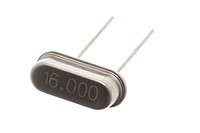
Photo from wikipedia
Abstract Two-dimensional growth of Potassium tantalate niobate (KTa 1−x Nb x O 3 ) crystals with x = 0.94 was visualized by a high-temperature in situ observation system. Moreover, the interfacial morphology… Click to show full abstract
Abstract Two-dimensional growth of Potassium tantalate niobate (KTa 1−x Nb x O 3 ) crystals with x = 0.94 was visualized by a high-temperature in situ observation system. Moreover, the interfacial morphology evolution and the interfacial kinetics during crystal growth were systematically studied by optical microscope. It was found that a square-shaped crystal surrounded by {1 1 0} planes was formed in the melt with small undercooling degree, while a large amount of rod-shaped crystals along with [0 0 1] direction predominated under large undercooling conditions. XRD results proved the orthorhombic phase of both shaped crystals. Interfacial kinetics analysis demonstrated the two-dimensional nucleation mechanism in the growth of square-shaped crystal. In contrast, the rod-shaped crystals were inclined to the rough surface growth mechanism. Furthermore, the surface compositional distribution of the as-grown crystal was carried out by EMPA, indicating that rod-shaped crystals had a smaller composition fluctuation than the square-shaped one, mainly due to the depressed segregating effect by the faster growth rate. The analysis of the mechanism and performance can promote the understanding of the KTN crystal.
Journal Title: Journal of Crystal Growth
Year Published: 2017
Link to full text (if available)
Share on Social Media: Sign Up to like & get
recommendations!